The DFI RDX200 CF-DR Motherboard Review
The Layout: PCI/PCI-E Slots and Southbridge
Moving along to the PCI/PCI-E slots we found that the DFI RDX200 CF-DR features a pair of x16 PCI-E slots (much like the SLI board, when both slots are used, they both switch to x8), a x1 PCI-E slot, and three PCI slots. What is conspicuously absent is the jumper system that DFI introduced with their LANParty NF4.
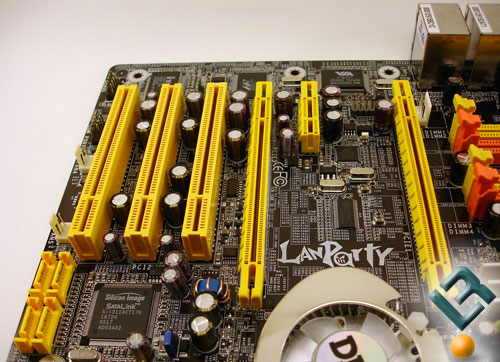
In the upper right hand corner of the above picture you will notice the 4-pin floppy type power connector; this connector provides more stability to the board, especially during Crossfire operation. While much has been made of this connector and whether it is needed, I asked DFI support for a final answer and theirs was “We didn’t put it there for looks“, which means it should be used.
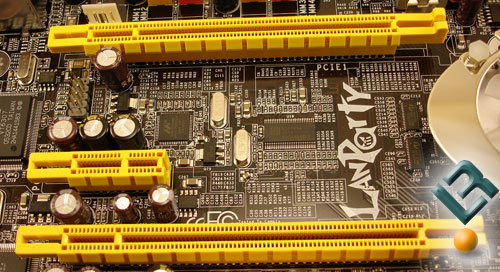
Another point worth mentioning is the space between the two x16 PCI-E slots. DFI increased the spacing noticeably, which should definitely help with those two slot video card coolers ATI loves during Crossfire operation.
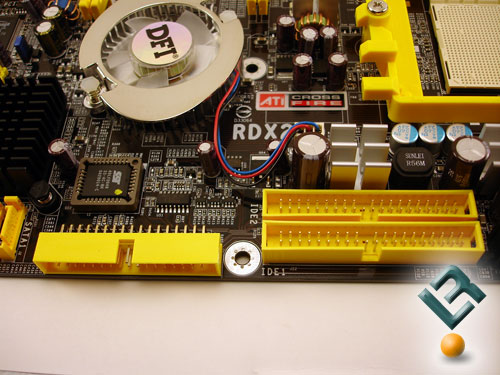
Something that may surprise you, as it did me, is the absence of the IDE RAID capability. I’ve never used IDE drives in a RAID configuration, but as SATA drives become the standard, there really is no use for IDE RAID. The RDX200 CF-DR supports a pair of IDE connectors that allow you to connect up to four IDE UltraDMA 133 devices.
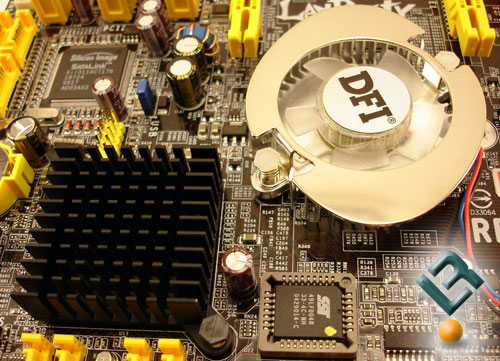
The RDX200CF-DR is based on ATI’s Radeon Xpress 200 chipset. The Xpress 200 offers 22 PCI Express lanes, four of which are dedicated to PCI-E peripherasls and the x1 PCI-E slot. Sixteen more are dedicated to the graphics solution (x16 for a single card, and x8 for dual graphics solutions). The last two lanes act as an interconnect to the the ATI SB450 Southbridge chip.
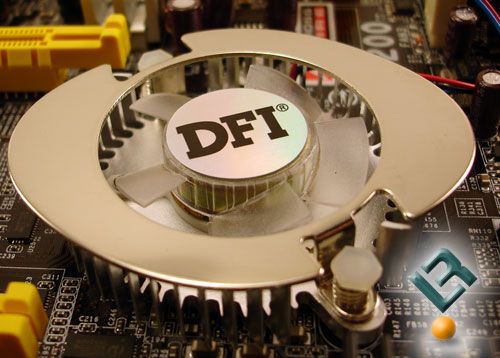
If the Northbridge chipset fan looks familiar it is because the exact same one used on the LANParty NF4 Series. What is different is the addition of a passive cooler to the Southbridge chipset.
The ATI SB450 Southbridge has developed a bit of a bad reputation for its poor USB performance. While it is true that it is slower than other solutions, and that it will affect transfer speeds for those that use external USB Hard Drives or things like USB keys, the SB450 does support USB 2.0 keyboards, mice and any other peripheral you might care to use.
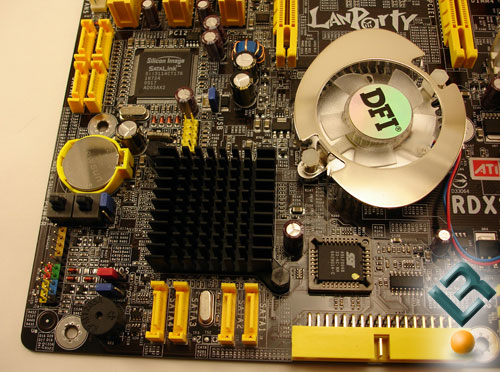
the RDX200 CF-DR has a pair of SATA solutions. First, the SB450 SB chipset supports 1.5GB/s as well as RAID 0 and RAID 1. The second solution, the Silicon Image Sil 3114 chip, also supports 1.5GB/s, as well as RAID 0, 1, 0+1, and RAID 5.
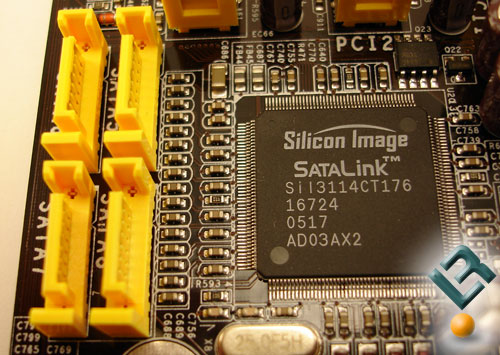
If this is less than impressive to you, do not feel alone. With the new standard being SATA 2.5, which among other things supports NCQ and 3.0GB/s speeds, this is hardly cutting edge technology and a definite disappointment thus far with everything else this board has to offer. I’ll give ATI credit for at least allowing RAID 5, but this is definitely going to hurt this board in the long run.

Comments are closed.